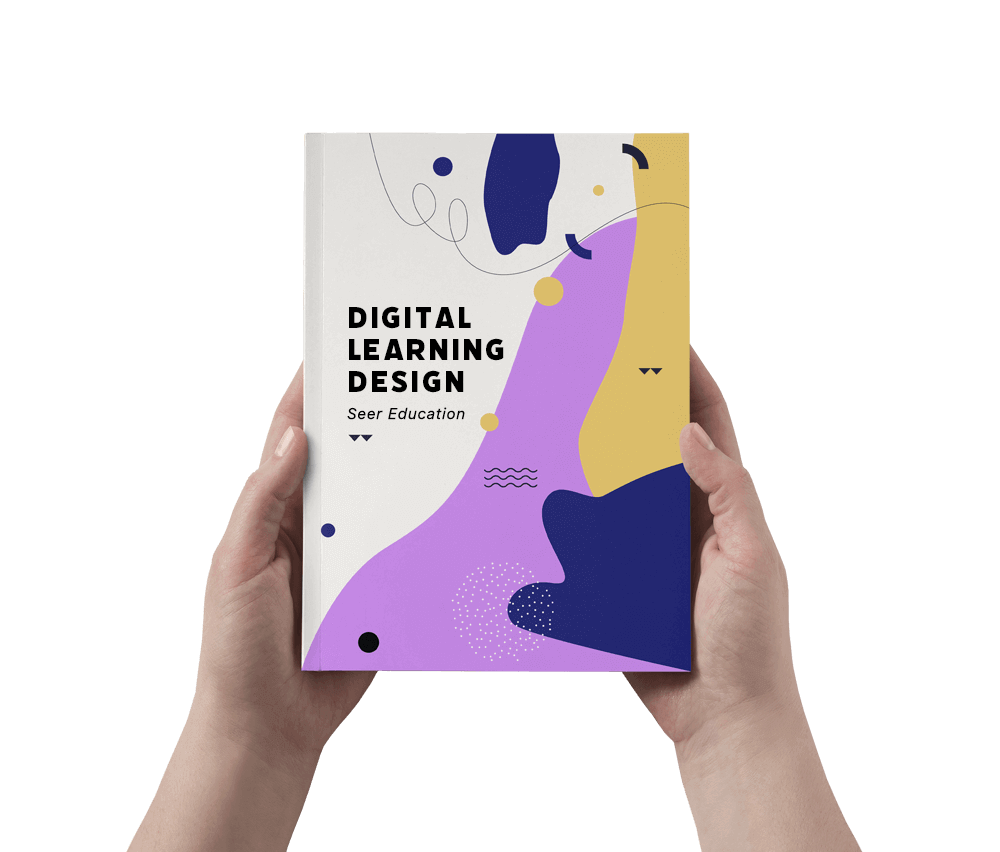Get instant access to
the full eBook
Enter your email to get a free sample

What will you learn
from this eBook?
The rapid growth in online learning has seen a demand for digital learning designers. Build valuable skills and start your progression as a digital learning designer with this free eBook.
-
1
Understand design
Discover differences between traditional and digital learning design.
-
2
Optimise media
Learn how to build interactive media assets for your digital classroom.
-
3
Build a course
Create the curriculum blueprint for your own interactive, online course.
-
4
Recognise trends
Identify and capitalise on emerging trends in online education.
What's inside
A hands on, practical primer for anyone looking to learn the principles of Digital Learning Design.

While online environments can be viewed as just another environment for learning, it is a new space for teaching and learning for many institutions and educators.
As an enabler, “technology itself does not improve learning”. To be effective, online learning needs to be learner centred, social and interactive. Should educators merely substitute the textbook for a computer screen, the potential for online learning goes unrecognised.
Chapter II
Since the term was coined in 2004, podcasting as a format has been cautiously adopted in learning and teaching. But more than just another medium for material, hearing a teacher’s voice can personalise learning content. In humanising online experiences, podcasts can foster a deeper personal connection between the student and their studies. This in turn can reduce typically high attrition rates for online courses.
Several podcast formats exist as either a complement to or core component of classroom learning. From a “Chat Show”, “Narrative Driven”, “Tutorial Segment” or “Quick Update”, each achieves immersion via a different objective. Popular educational podcasts include Duolingo, Hardcore History and Freakonomics.
Chapter III
While there’s many ways to create an online course, below is an established blueprint for creating an online course. It’s important to remember that when designing a curriculum, structure each unit into manageable, bite-sized lessons. When developing online courses, instructional learning designs should adopt an Agile approach where possible.
Viewing course creation as an iterative process, content should be in a state of continuous change. Decision-making on changes should be validated by quantitative and qualitative data from students. This data forms the valuable input in a feedback loop that makes for more relevant, more effective educational outcomes.
Here’s a typical framework for designing the structure of an online course…
Chapter IV
Integrating social elements within online environments has a number positive effects on learning. Raspovic et al. (2017) argue that enabling “social networking can help establish online connections and minimise isolation feelings, which usually occur in online learning where students feel isolated or lonely. Establishing these online collections through online learning environments can develop learning communities, which in return develop a positive sense contributing to student satisfaction, perceived learning, and social presence” (p.xx).
At its core, learning is innately social and collaborative. Without the social aspect, “learning would be exceedingly laborious, not to mention hazardous, if people have to rely solely on the effects of their own” (Bandura p. 22). As humans, we learn observationally; relying on the actions of others to inform our own behaviours. Online learning lends itself to social learning through a range of tools and the gamification of activities.
Chapter 1. Online vs. traditional learning
While online environments can be viewed as just another environment for learning, it is a new space for teaching and learning for many institutions and educators.
Chapter 2. Media assets for digital classrooms
Countless applications enable digital learning designers to rapidly develop podcasts, videos and infographics for interactive online learning content.
Chapter 3. How to create an online course
While there’s numerous approaches to creating an online course, here you can find an industry approved blueprint for developing your an online course.
Chapter 4. Emerging educational technologies
Educational technology is evolving at a breakneck pace. From social learning to Massive Open Online Courses (MOOCs), here are opportunities for innovators.


